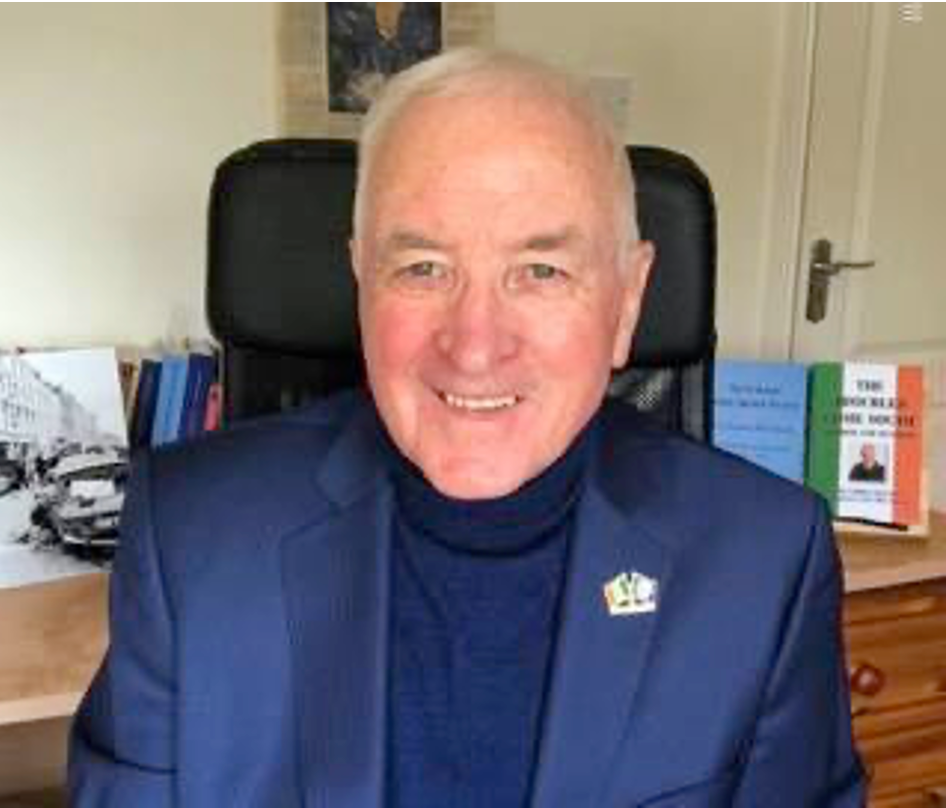ANNIVERSARY BRITISH ADMITTED 25 HAD BEEN INTERNED BECAUSE OF BOMBINGS - WHAT DID DUBLIN DO?
- JOHN OBRIEN
- May 11, 2021
- 4 min read

The Prime Minister emphasised again that the people who had bombed Dublin were now interned, and that this was the only way which they could be dealt with because the sort of evidence against them would not stand up in court. They were certain they had the right people, but they could not bring them to trial.”
The Bombing Attacks 17th May 1974
On that fateful Friday Dublin was busy and bustling with the centre city streets crowded with shoppers and visitors. The weather was good, and the weekend beckoned. Death was far from the minds of the populace. This illusion of tranquillity was shattered in under two minutes by three car bombs. A car bomb is a frightening and vicious attack and a no warning car bomb is at the upper end of that scale. The noise of the explosion is tremendous particularly in an urban setting and the death and destruction is truly horrendous. It is difficult to fully understand the real nature of these attacks unless one was proximate to them.
The timings were,
Talbot Street: 1730 approx.
South Leinster Street: 1732 approx.
Parnell Street: 1728 approx.
Monaghan: 1858 approx.
What did the Dublin Government do?
It was reasonable to expect that these most grievous crimes would be investigated with vigour and determination and that all the assets of the State would be brought to bear on the investigation. It was clear that the attacks had an established connection with Northern Ireland from the outset. It is also a fact that the Gardai had compiled a relevant suspect list of alleged Loyalist perpetrators resident in Northern Ireland. It is a fact that gardai travelled to the North on foot of this information seeking assistance there. It is a fact that none of these suspects were interviewed in connection with the crimes. It is a fact that the Garda investigation ground to a halt very quickly. Judge Barron and the subsequent inquiries are critical of this “lapse”. It is also a fact that many documents related to the investigation have gone missing from the Garda Síochána, the Department of Justice, the Defence Forces and the Government. Some of this is unsurprising due to the passage of time and some of it is unforgiveable having regard to the enormity of the crimes.
The British Government: Communication [1]
Certain information did come to the knowledge of An Taoiseach and the Minister of Foreign Affairs, as well as to some of their senior officials in the course of high-level inter-governmental meetings.
A meeting was held in London on 11th September 1974, at which the British side comprised of the Prime Minister, the Secretary of State for Northern Ireland, The British Ambassador to Dublin, the Permanent Secretary to the Northern Ireland Office, and other senior civil servants. The Irish side comprised of An Taoiseach, the Minister for Local Government, the Minister for Foreign Affairs, the Irish Ambassador to London as well as senior civil servants of the Department of the Taoiseach and the Department of Foreign Affairs. In the course of this meeting, minutes prepared in the Department of Foreign Affairs quote the Prime Minister as saying the following: “In recent months some very nasty men had been lifted on the Unionist side. On the Friday and Saturday of the UWC strike, twenty five interim custody orders had been signed and the perpetrators of the Dublin bomb outrages had been picked up and were now detained, but it was impossible to get the evidence to try them in ordinary courts”.
These minutes were circulated to the Department of An Taoiseach, the Department of Foreign Affairs and to the Irish Ambassador in London.
This was not the only occasion where the British side provided critical information to the Irish side. A similar statement is recorded in minutes prepared by the Department of Foreign Affairs relating to a meeting in Dublin on 21st November 1974. This was a smaller meeting at which the British side comprised the Prime Minister, the British Ambassador to Dublin and senior civil servants. The Irish side comprised An Taoiseach, An Tánaiste and two senior civil servants, one each from the Department of An Taoiseach and the Department of Foreign Affairs. At this meeting the British Prime Minister is recorded as saying:
“He (the Prime Minister) emphasised again that the people who had bombed Dublin were now interned, and that this was the only way which they could be dealt with because the sort of evidence against them would not stand up in court. They were certain they had the right people, but they could not bring them to trial.”
How could it be remotely possible that the cabinet of the day walked into cabinet meetings and blithely ignored the information in their possession?
The next persuasive reason which renders the inaction of the government inexcusable, is the fact that they had just received a key report on many aspects of state security. The government appointed Mr. Justice T.A. Finlay to report into the escape by helicopter of three Provisional IRA prisoners from Mountjoy prison on the 31st October 1973 and related matters. Justice Finlay presented four separate reports in all on all aspects of state security. These reports should have raised the level of critical awareness in government to the highest level of knowledge and reaction.
Loyalists could not have acted without assistance?
[1] Interim Report on the Report of the Independent Commission of Inquiry into the Dublin and Monaghan Bombings December 2003 Page 129






Comments